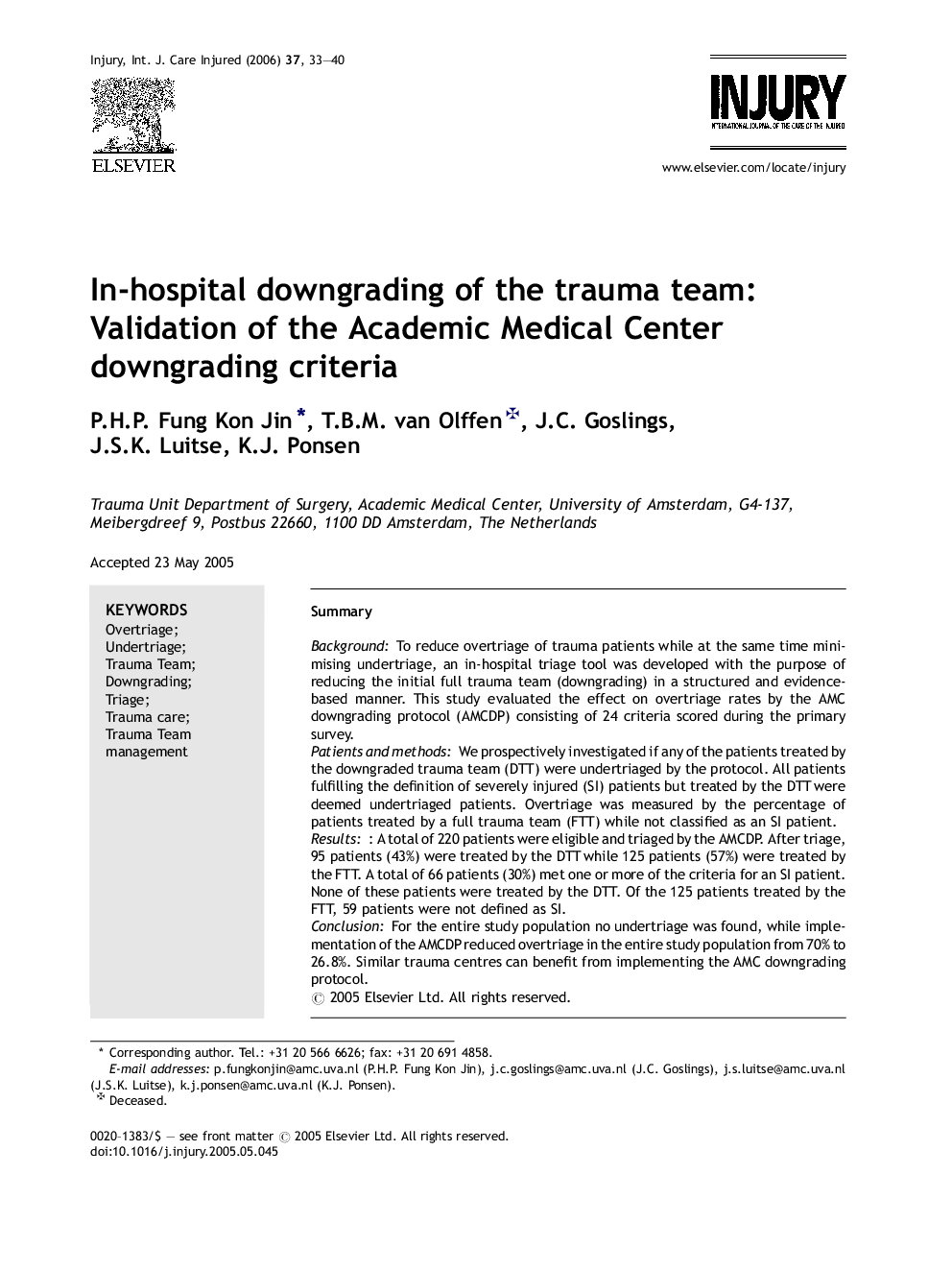| Article ID | Journal | Published Year | Pages | File Type |
|---|---|---|---|---|
| 3243214 | Injury | 2006 | 8 Pages |
SummaryBackgroundTo reduce overtriage of trauma patients while at the same time minimising undertriage, an in-hospital triage tool was developed with the purpose of reducing the initial full trauma team (downgrading) in a structured and evidence-based manner. This study evaluated the effect on overtriage rates by the AMC downgrading protocol (AMCDP) consisting of 24 criteria scored during the primary survey.Patients and methodsWe prospectively investigated if any of the patients treated by the downgraded trauma team (DTT) were undertriaged by the protocol. All patients fulfilling the definition of severely injured (SI) patients but treated by the DTT were deemed undertriaged patients. Overtriage was measured by the percentage of patients treated by a full trauma team (FTT) while not classified as an SI patient.ResultsA total of 220 patients were eligible and triaged by the AMCDP. After triage, 95 patients (43%) were treated by the DTT while 125 patients (57%) were treated by the FTT. A total of 66 patients (30%) met one or more of the criteria for an SI patient. None of these patients were treated by the DTT. Of the 125 patients treated by the FTT, 59 patients were not defined as SI.ConclusionFor the entire study population no undertriage was found, while implementation of the AMCDP reduced overtriage in the entire study population from 70% to 26.8%. Similar trauma centres can benefit from implementing the AMC downgrading protocol.
